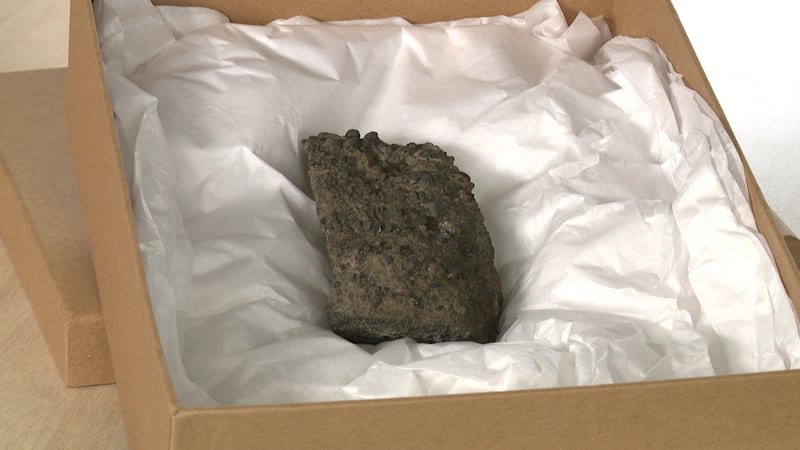On this day, 45 years ago, 257 people lost their lives after their plane crashed into Mount Erebus in Antarctica.
A stone from that maunga has been gifted to the Ministry for Culture and Heritage by Antarctica New Zealand for a memorial.
“Tēnei paku whakaaro hei piriti mai i Maunga Erebus ki Aotearoa nei, koirā te tino kaupapa o tēnei toka,”
“This small gesture serves as a bridge from Mount Erebus to Aotearoa, embodying the essence of this stone’s purpose,” Heritage Ministry Crown Māori partnerships deputy secretary Philip-Barbara (Ngāti Porou, Ngāti Uepōhatu) said.
“Hei whakatinanatanga o te maunga e noho tonu nei ētahi o ngā whānau, e kore e hoki mai ki Aotearoa.”
“It symbolises the mountain where some families’ loved ones remain and will never return to Aotearoa,” Glenis Philip-Barbara said.

Philip-Barbara leads the work on the National Erebus Memorial.
Plans for a memorial for the tragic event have been challenging for the ministry, as finding a suitable location in Tāmaki Makaurau has proved difficult. The most recent option, the Parnell Rose Gardens, is no longer viable due to the Auckland Anniversary Day floods and Cyclone Gabrielle.
“Tēnei mea te whai whenua mō te kōhatu whakamaumahara, ehara i te mahi māmā, engari he mahi uaua.
“The task of finding land for the memorial stone is not an easy one; it is a challenging undertaking.
“Nui ngā tāngata e hiahia ana te āta whakaarohia, mēnā, ka tika rānei tēnei kōhatu ki tō rātou kokona ao.
“Many people want careful consideration given to whether this stone is appropriate for their part of the world.
“Nā reira ,nui ngā kōrero maha, ngā hui, engari kei te whai tonu mātou, tētahi wāhi mō te kōhatu whakamaumahara."
“Therefore, there have been many discussions and meeting but we are continuing to seek a suitable place for the memorial stone.”

Part of Philip-Barbra’s job is also to raise awareness of the event across Aotearoa.
“Ko tēnei mea te hītori, he mea whānui, he mea roa, engari he taonga i tuku iho i tēnei reanga ki ia reanga e haere mai ana, hei taonga mā rātou.
“History is something vast and enduring, yet it is a treasure passed down from one generation to the next, as a legacy for them.
“Nā reira ēnei kōrero, ēnei aituā, he taonga kōrero kei roto, hei whakatinana i ngā huarahi ki mua, ngā rautaki ki mua.
“Therefore, these stories, these tragedies, carry valuable lessons within them, guiding pathways and strategies for the future.
“Nā reira, atu i te whakaaro ki ngā tāngata kua ngaro, he ngako kei roto hoki, ngā tauira, ngā whāinga, kia pai ake te huarahi ki mua."
“Thus, beyond remembering those who have been lost, there is also deep meaning within — examples and aspirations to forge better paths ahead,” she said.
The ministry has historians who have sat to kōrero with whānau members of the 257 people who died to gather their stories. The work can be found on the ministry’s website.
“Kia mārama ō rātou uri, ō rātou whānau whānui, he aha wā rātou waihotanga ki tēnei ao, koirā te tino whai o Te Manatū Taonga i tēnei wā."
“The aim is to ensure their descendants and extended families understand the legacy their loved ones left in this world, which is the primary focus of the ministry at this time,” Philip-Barbra told Te Ao Māori News.
There are several events taking place around the motu in memory of those who lost their lives. One is at Ōtautahi St James’s Church, and there will also be some people gathering near Mount Erebus at the site where the incident happened.
“Engari mō te nuinga o ngā whānau, he wiki mō te maharatanga, mō te tuari karakia, mō te noho mū, me kī, i runga i ngā whakaaro ki ō rātou whānau.”
“But for most of the families, this week is one of remembrance, of sharing prayers, of quiet reflection, and of holding their loved ones and their families in their thoughts.”



